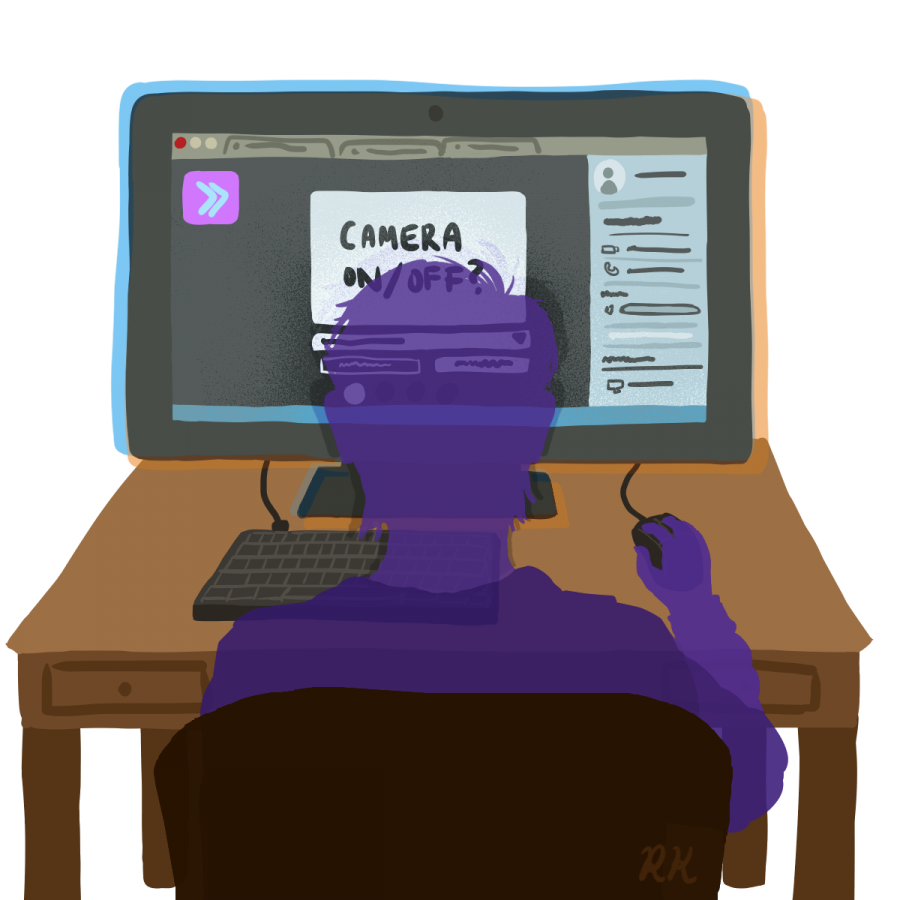Camera concerns
Camera use in the virtual classroom should be encouraged but not mandated
February 14, 2021
A pen and paper swapped out for a laptop. A bustling classroom switched to Blackboard Collaborate. This is the new normal.
Virtual school has been challenging for both students and teachers, with one of the biggest obstacles being the lack of camera usage. Turning on cameras has obvious benefits. It helps maintain a sense of normality in the virtual environment, and makes it easier for teachers to engage students and for students to foster a community with their peers. It also holds students accountable for learning the material, as they are forced to pay attention and are unable to attend to other tasks while in class.
However, the lack of access to adequate internet can make it a challenge for students to turn on their cameras, as the bandwidth may not be enough to support them. In fact, according to the Pew Research Center, approximately one-in-five teenagers are unable to finish their homework due to the digital divide. Internet access is an equity issue that disproportionately impacts low-income families and students of color.
For some students, turning on cameras is anxiety-inducing. In Fairfax County, the primary use of Blackboard Collaborate discourages students from turning on cameras, since the interface only shows a couple of faces at a time whereas in platforms like Google Meets there is a gallery view feature. Additionally, turning on cameras can be a huge invasion of privacy. Beyond just seeing a student’s face, the camera provides a look into the student’s personal life. This is not only stressful for some students, but can also be a risk to those with extenuating circumstances.
In my experience, while turning on cameras has helped engagement in some aspects, in some of my classes like AP English Literature, we are able to have substantive discussions even without seeing each other. There are several alternatives to track engagement and keep students attentive in class. My teachers have structured class around tools like Kahoot, PearDeck, and Jamboard, or have used polls within Blackboard Collaborate to gauge participation. Though the situation is not ideal, students should be encouraged but not required to turn their cameras on. Instead, teachers should integrate other apps and programs into the virtual classroom to encourage participation.






